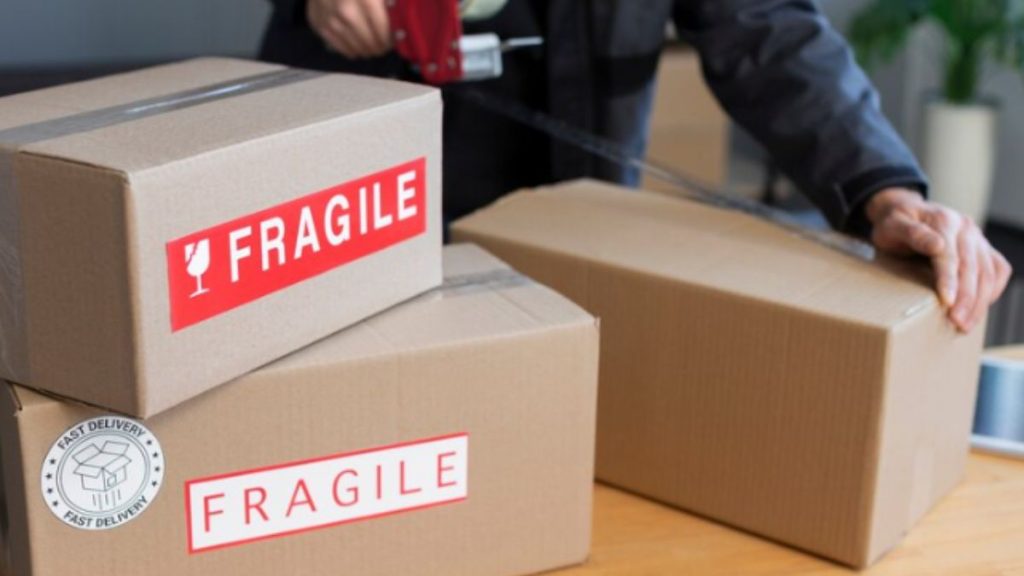When shipping fragile items, proper packaging is key to ensuring your product makes it from point A to point B in one piece. This is especially true for international shipments, where your package will be in transit long before reaching its destination.
Label the Box
Fragile items are among the most popular products to get damaged during shipping. However, e-commerce businesses can take several precautions to ensure that their fragile items reach their customers in good condition. They can use standard shipping boxes, select a reliable carrier, and even consider getting insurance coverage for their products.
Another important tip is to label the box when shipping fragile items. This will alert carriers to the contents of the package and encourage them to handle it with care. A “fragile” or “handle with care” label should be placed on all sides of the box if possible.
Another way to help protect your fragile items is to use air pillows or packing peanuts to fill any empty spaces in the box. This will prevent the item from shifting during transit and causing damage. It’s also a good idea to include a tracking number so your customer can keep tabs on their package. While it isn’t possible to eliminate all risks of damage, following these tips can reduce the risk significantly and ensure that your fragile items arrive in perfect condition at their destination.
Use the Right Size Box
You’ve put a lot of time and energy into your product, so, understandably, you would want to protect it as much as possible during transit. Unfortunately, shipping is unpredictable. Packages are not uncommon to be dropped or mishandled, which can lead to breakage.
One of the best ways to prevent this is to use the right box size. A box that is too large can cause items to shift during transit, while a box that is too small can lead to compression and crushing. Aim for a box slightly bigger than the item you’re shipping. This will allow you to add padding and void fill without the risk of your fragile item shifting or compressing.
For high-value, especially fragile items, consider double-boxing them. This means placing a smaller inner box inside of a larger outer box. The inner box should be packed tightly with a layer of protective infill, and the fragile item should be placed on top.
Use Cushioning Materials
When shipping fragile items, it’s important to use cushioning materials to protect them from damage. These materials include packing peanuts, bubble wrap, or crumpled-up paper. Using these materials ensures that your fragile item will arrive at its destination in one piece.
When packaging your fragile items, use a sturdy box that is the right size. A box that is too large could lead to shifting during transit, while a box that is too small can result in compression and crushing. Additionally, wrap each item in bubble wrap and add extra padding to the top of the box.
Another critical step is to label the box as fragile clearly. This will encourage carriers to handle the package with care during shipping. It will also help reduce the risk of mishandling by other workers in the warehouse or distribution center. Write a “fragile” sticker on all sides of the box for maximum protection. This will make it easier for the carrier to notice and take special care with the box.
Make Sure the Box is Sturdy
When shipping fragile items, the box must be sturdy enough to protect them from impact and shaking. Fragile products are prone to breakage during transit, and that can lead to unhappy customers. Luckily, there are some simple things you can do to help ensure your product gets to its destination safely.
Start by choosing a box that’s slightly larger than your product. This will allow you to add cushioning materials without overpacking the box. You can also use a corrugated insert to strengthen your packaging further.
Pack your item securely in the box if you’re using bubble wrap, shredded cardboard, packing peanuts, or another form of padding. Make sure there are no gaps or loose areas that could cause the item to shift during transit.
And lastly, remember to label your box as fragile. This can encourage carriers to handle your package with more care. It won’t prevent damage entirely, but it can reduce the chances of a mishandling incident. This is especially important if you’re shipping your fragile items in long carrier trailers, often packed to the ceiling with thousands of other packages.
Don’t Overload the Box
Getting a box full of fragile items and finding everything is broken is one of the worst things that can happen to online shoppers. It’s also a huge pain for companies that must repackage, reship, and refund the item. To help prevent this, following some essential shipping tips for fragile items is important.
First, use a box slightly larger than the actual product. This will prevent items from shifting around while in transit. Additionally, you should use packing materials to fill any extra space in the box. This could include packing peanuts, bubble wrap, foam sheets, or crumpled paper.
Finally, be sure to label the box clearly. This will help ensure all employees handling the package know it is fragile and needs special care. In addition, it will make it easier for customers to track their orders. It will also save you time and money in the long run by reducing the damaged products you have to ship back to customers.







